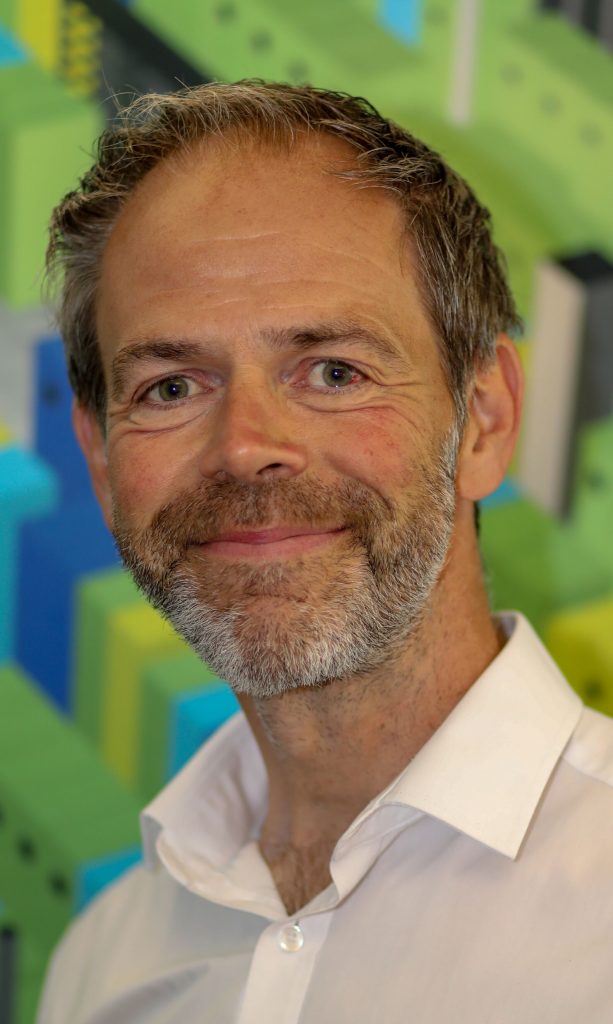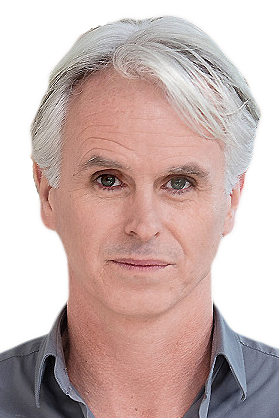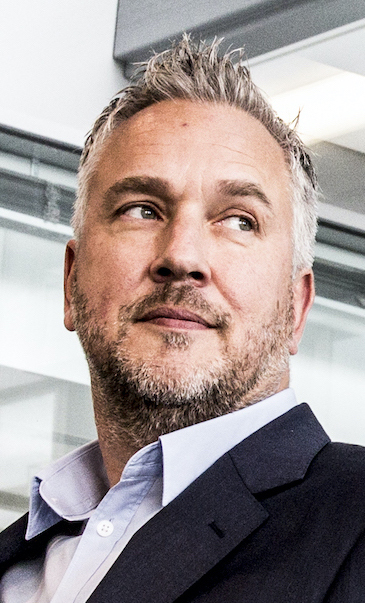Keysource, the data centre and critical environment specialist, has announced the key findings of this year’s industry survey which is designed to give an insight into the decisions and considerations that UK IT directors and senior decision-makers in the data centre industry are making, which in turn are influencing the market. It’s titled The New Normal & It’s Green! as it acknowledges that much of the developed world has taken the decision to ‘live with the virus’ and look to the future, embracing the increasingly important sustainability criteria for all businesses.
The results of the survey show that the data centre sector will continue to be at the heart of the global post-pandemic recovery, as for many respondents, the ability to bounce back or accelerate growth lies in their technology and continued Digital Transformation. The good news is that this is creating increased budgets which, combined with a market that is bursting with service options, suggests a positive outlook.
However, a large proportion of our respondents have highlighted real concerns around the challenges in delivering these often complex and multifaceted transformation projects. A large proportion (83%) believe that social and economic challenges will have an impact on their ability to meet current goals and objectives. Confidence was low across all key phases of the change process alongside reports that existing investments are preventing transformation in some form.
“The industry will need to work hard to protect customers against transformation failure or worse and perhaps step up with more innovative solutions to ensure that these objectives can be delivered,” said Jon Healy, Operations Director at Keysource.
The report also highlights the increasing importance of sustainability – arguably the hottest topic in the industry – and there are some encouraging results that show a shift from reactive and regulatory action to a more proactive and ‘how far can we go’ approach. In fact, more than 80% of those surveyed said they would consider making sustainable changes without a financial incentive or benefit, and with corporate social responsibility and Environmental Social Governance all moving to the fore this suggests that the opportunities here are significant for industry and society.
And finally, security and cybercrime are also flagged as a major concern, something that has grown substantially ever year in the survey. Despite this, only 40% of respondents stated that they consistently undertake the necessary checks for suppliers which perhaps explains why only around half of those questioned were fully confident in their organisation’s resilience to a breach.
“The results of the survey are compelling, with demand for data centres continuing to grow but security, sustainability and the ability to undertake change all key concerns. The questions remain – can enough be done to keep up with this demand? Or how much will the industry drop the ball and is that ok? There is, however, no doubt that whatever happens it will be at breakneck speed. If it was easy, it wouldn’t be fun!” said Healy.
Intelligent Data Centres spoke to five experts about which technologies should data centre leaders be prioritising as they plan their Digital Transformation strategies for the coming year.

Dean Boyle, CEO, EkkoSense
Before focusing on specific data centre technologies for 2022 and beyond, it’s worth identifying the two major challenges that operations teams face over the coming year.
Firstly, data centre workloads are growing, with analyst projections suggesting that levels could see CAGR growth rates of up to 21% between now and 2025. Secondly, organisations are now coming under increased pressure to reduce their energy consumption – particularly as the reality of corporate net zero commitments start to bite.
Unfortunately, these two very real challenges appear conflicting. Meeting projected workloads will be hard to achieve without growing data centre capacity and associated cooling infrastructure. This in turn adds to the data centre’s overall carbon footprint – exactly what data centre management doesn’t want at a time when they are being tasked with securing quick carbon reduction wins across their operations.
The default position for many data centre teams is still to keep throwing more cooling at a problem should any issues arise. In EkkoSense research conducted earlier this year, we identified a massive industry-wide over-provision of cooling, with average cooling utilisation currently sitting at just 40%. Despite this excess cooling, some 15% of racks still remained outside of ASHRAE guidelines for inlet temperatures.
Perhaps the reason for this is that only 5% of M&E teams currently monitor and report actively on an individual rack-by-rack basis, and even less collect real-time cooling duty information. This means it’s very difficult for data centre teams to deliver a precise carbon reduction across their operations if they don’t know exactly how much energy they’re using in the first place.
That’s why we believe data centres should now be prioritising a more effective software-based optimisation approach – one that truly embraces the power of technologies such as IoT devices, Machine Learning and AI. With effective optimisation and ongoing monitoring and management, organisations will be able to increase their data centre cooling utilisation and secure average data centre cooling energy costs of 30%.
And rather than relying on unwieldy automation solutions, we expect a much more light-touch DCIM-style approach becoming the smarter choice for 2022 and beyond. For this, we see cooling, power and space data being collected at a highly granular level – ideally with each individual rack featuring multiple sensor points. Operations teams can then access 3D visualisations that are easy to interpret, while AI algorithms will draw on potentially billions of Machine Learning data points to provide actionable optimisation insights. The key difference for operations teams will be that they are provided with actionable recommendations that they can validate before pursuing.
Optimisation done this way via a new style of light-touch DCIM will help to put the control back in the hands of data centre teams, giving them the insight they need to make the kind of smart optimisation choices that can actually reduce cooling energy usage across their sites.
Nick Ewing, MD, EfficiencyIT

According to Gartner, 91% of organisations are engaged in some form of digital initiative, and for our customers within the data centre, IT and connectivity domains, Digital Transformation (DX) has become one of the central topics of discussion.
Many of our conversations today are framed around three central points of transformation; firstly, increased reliability of the data centre or IT function; secondly, increased efficiency, both in terms of day-to-day operations and energy usage; and thirdly, improved sustainability, or a direct reduction in C02 emissions as a primary outcome. What’s paramount, however, is that before beginning any Digital Transformation initiative, and specifying the technologies to accompany, it’s crucial to understand the business drivers and to join the lines between IT decision-makers and procurement.
With that in mind, there are three technologies we believe data centre professionals should be prioritising as they plan their Digital Transformation strategies for the coming year.
Increasing reliability and uptime
To increase resilience within any infrastructure environment, there are two key aspects to consider. Firstly, the underlying power system, and secondly, increasing the visibility of disparate IT assets. According to the Uptime Institute Global Data Centre Survey 2021, power (43%) remains the leading cause of outages within the industry, and critical power protection systems such as single or three-phase uninterruptible power supplies (UPS) are one area in which we often see an immediate need for modernisation. Here, utilising the newest UPS technologies powered by lithium-ion means decision-makers can gain the perfect balance of reliability and energy efficiency, supporting the business case for DX directly.
Driving efficiency across the life cycle
From a visibility perspective, today’s software platforms can deliver real-time visibility of any infrastructure device directly to your smartphone. For any end-user tasked with managing multiple IT sites, or a large data centre using components from different vendors, we’d recommend they install a data centre infrastructure management (DCIM) solution.
From a reliability and both an operational and energy efficiency perspective, DCIM will enable you to manage your infrastructure more effectively, safeguard you from unwanted downtime and provide data-driven recommendations on how to reduce energy consumption. What’s not measured cannot be managed, so from a Digital Transformation point of view, it’s a no-brainer – especially when trying to demonstrate a Return on Investment (RoI).
Sustainability as an outcome
By modernising with energy efficient components and using software systems to reduce stranded capacity, identify hotspots and lower power consumption across the IT estate, end-users can begin to reduce CO2 emissions and demonstrate sustainable returns from their investments in Digital Transformation. Here, advances in critical infrastructure have indeed become one of our greatest assets. However, before specifying any technology, it’s crucial to understand the business case and to join the allotted decision-makers.

Rowland Kinch, CEO at Custodian Data Centre
As technologies continue to develop and evolve, data centre operators need to stay up to date with the latest innovations within our industry. As a data centre operator, our position on Digital Transformation may differ from other users. However, with a new 10MW campus in development, there are a number of areas in which we are investing to ensure that our customers are both supported with resilient infrastructure and receiving optimum service.
Firstly, the more information we have about both new and existing customers, the more effective we can be in terms of meeting demand for whitespace. ERP and CRM systems are often overlooked, but they play a fundamental role not just within data centres, but in wider business. By investing in these tools, we can provide our internal teams with a more rounded view of what is going on within the organisation, identify where our customers are in terms of decision-making and ensure we are ready to meet their demands.
Such solutions enable us to be truly insight-led and to develop our understanding of both current and potential customers. Creating a single pane of glass view means anyone in the business can leverage the insights from sales to marketing to technical teams and implement these findings to encourage customer growth. Further, as a data centre operator who’s scaling up and investing in a new site, customer data is one of the more important things we need to successfully expand. By incorporating key learnings from our dynamic, technical service personnel, we can eliminate future pain points.
Energy efficiency is also a key area that we’re focused on from a transformation perspective. CFD software has enabled us to model the rack layouts and technical suites within our new site and identify any hot spots, making it easier for us to become more energy-efficient, while saving costs for our customers. Using an integrated DCIM platform also means that we can operate the environment with greater efficiency.
Physical security is another key aspect to ensure our customer’s data is proficiently protected. This includes biometric access, environmental monitoring, manned CCTV monitored all hours of the day, as well as mantraps and ultra-secure razor wire perimeter fencing.
Finally, power consumption is ever-increasing, and resilience remains key, so Digital Transformation technologies within data centres need to develop to keep up with demand. Having the foresight to forward plan and ensure that your critical power infrastructure, like UPS, ATS and Switchgear are future-proofed and scalable, is vital for end-users. As an operator, uninterruptible power is essential, but that power should also be sustainable. Here, diverse renewable energy feeds can play a critical part in delivering sustainable service to customers.

Andy Connor, Channel Director EMEA, Subzero Engineering
Digital Transformation is evolving within the industry and pain points for customers are becoming ever more apparent. Within our engineering expertise, we have focused on tackling key challenges, such as driving data centre performance and increasing energy efficiency, to support our customer’s digital initiatives.
With architectures changing all the time, today’s data centres need to be flexible and designed to meet the specific needs of each end-user. From colocation environments to micro data centres at the Edge, technologies have had to quickly evolve to keep pace with new developments, and at Subzero we see three key areas which are critical for Digital Transformation.
A data-driven approach
With modernisation programmes currently a key focus for customers, Computational Fluid Dynamics (CFD) software plays a vital role when it comes to data centre construction, retrofit and helping to improve the efficiency and performance of legacy data centres. It allows the owner or operator to simulate endless combinations of racks, cabinets, cabling and mechanical and engineering (M&E) equipment for greater optimisation, saving customers an enormous amount of time and resources.
Such software provides a detailed, data-driven analysis of the cold supply air and the hot exhaust air throughout the data centre and identifies the potential overheating of IT equipment and ‘hot spots’. Further, the analysis highlights how energy costs can be reduced by optimising and maximising cooling throughout the data centre, meaning that for operators looking to reduce energy usage and CO2 emissions, investing in an Environmental Impact Evaluation, and the accompanying insights, offers a key starting point from which to build any Digital Transformation programme.
Optimise cooling
Hot and cold aisle containment solutions are an excellent way to improve efficiency and power density since both prevent the cold supply and hot exhaust air from mixing in the data centre. This results in higher cooling supply temperatures, lower CRAC fan speeds, a lower carbon footprint and a lower PUE. Importantly, one of the key outcomes is a significantly reduced energy bill so by implementing a contained solution and coupling it with an energy management and monitoring programme, end-users can extend the life cycle of their systems and stretch their money further.
Agility at the Edge
According to Gartner, ‘more than 50% of enterprise-generated data will be created and processed outside the data centre or cloud’ and with data, connectivity and application availability remaining key requirements for Digital Transformation, micro data centres are a key technology to accompany any strategy. Edge data centres need to be flexible to meet the demands of secure, localised processing and ultra-low-latency applications such as smart manufacturing, automated payment kiosks and 5G. If you’re planning any Digital Transformation initiative around these technologies, then a micro data centre solution is likely essential.

Marc Garner, VP Secure Power Division, Schneider Electric UK & Ireland
With demands for Digital Transformation accelerating at a fast pace, today’s data centre operators are facing a multitude of new challenges. Within both legacy data centre environments and new builds, efficiency and sustainability have fast become crucial aspects of decision-making. A report from 451 Research and Schneider Electric found that 97% of colocation providers’ customers, for example, are asking for contractual sustainability commitments.
The need to become more sustainable, is in essence, is a primary driver of Digital Transformation initiatives. However, resilience within any mission-critical environment is also essential. Finding balance between the two, therefore, requires careful consideration in terms of technology choices, greater insights into the operating environment and a holistic sustainability strategy from the outset. As such, there are two technologies, among many others, that today’s operator might consider key within any Digital Transformation strategy.
Building sustainable capacity, fast
According to CBRE, data centre growth within the Frankfurt, London, Amsterdam and Paris (FLAP) markets will reach 442MW of new capacity during 2021, and today’s operators are under increasing pressure to build new facilities quickly – and to do so in a sustainable way. Prefabricated data centre infrastructure offers today’s operators a key vehicle to expand or scale capacity within new and existing sites, in a predictable and energy efficient manner.
These all-in-one modules are designed, specified and assembled at the factory level, then delivered direct to site in a purpose-built, secure and weather-proof structure in as little as 12-16 weeks. Prefabricated solutions include the complete spectrum of physical IT infrastructure, such as Lithium-Ion UPS, traditional air-based cooling systems, racks and DCIM software. Recent design developments have also seen them evolve to accommodate liquid cooling technologies. For end-users looking to scale fast and meet demanding timescales, prefab offers a resilient and quick-to-deploy Digital Transformation solution that can support on-premises, hybrid IT and Edge Computing workloads.
Managing on premise and distributed IT infrastructure
Data Centre Infrastructure Management (DCIM) software has become one of the key technologies to help end-users manage their mission-critical environments more effectively. With greater need to mitigate downtime and to monitor distributed assets in real time, DCIM offers end-users increased visibility from anywhere at any time. Newer platforms, like Schneider Electric’s EcoStruxure IT, leverage AI and Machine Learning to proactively identify faulty components before they malfunction and to alert service personnel, which helps to improve service continuity and prevent outages.
Further, DCIM platforms such as EcoStruxure are far more advanced than traditional, on-premises software solutions and offer a vendor-neutral monitoring solution for any IoT-enabled device. They are simple to install, intuitive to use and can help manage and reduce energy consumption – enabling power and cooling systems to be operated with optimum energy efficiency and thereby meeting demands for resilience and sustainability.
Click below to share this article


